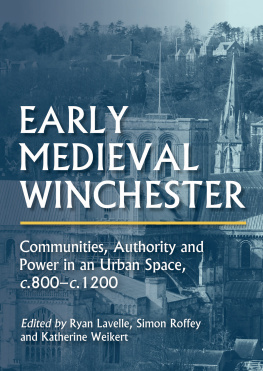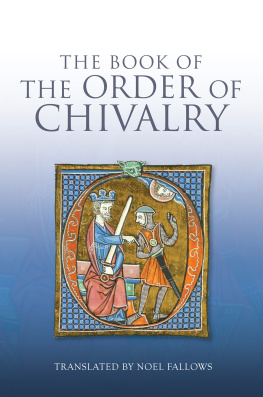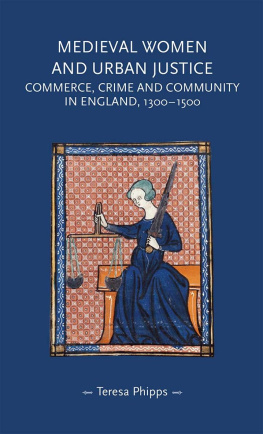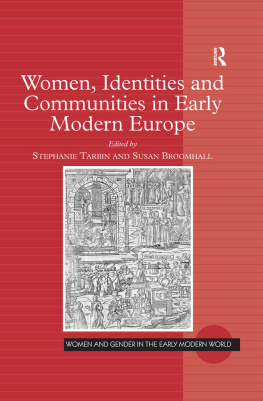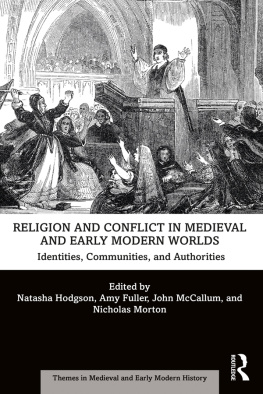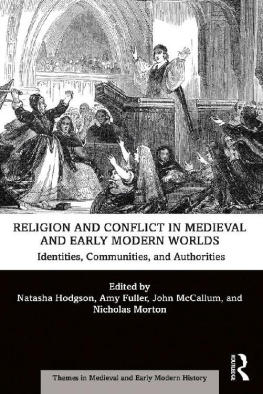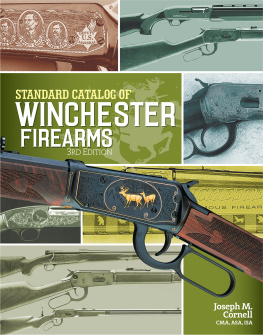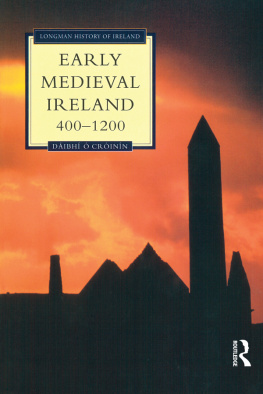


Published in the United Kingdom in 2021 by
OXBOW BOOKS
The Old Music Hall, 106108 Cowley Road, Oxford, OX4 1JE
and in the United States by
OXBOW BOOKS
1950 Lawrence Road, Havertown, PA 19083
Oxbow Books and the individual contributors 2021
Hardback edition: ISBN 978-1-78925-623-9
Digital Edition: ISBN 978-1-78925-624-6
A CIP record for this book is available from the British Library
Library of Congress Control Number: 2021943928
All rights reserved. No part of this book may be reproduced or transmitted in any form or by any means, electronic or mechanical including photocopying, recording or by any information storage and retrieval system, without permission from the publisher in writing.
Printed in Malta by Melita Press
Typeset in India by Lapiz Digital Services, Chennai.
For a complete list of Oxbow titles, please contact:
UNITED KINGDOM
Oxbow Books
Telephone (01865) 241249
Email:
www.oxbowbooks.com
UNITED STATES OF AMERICA
Oxbow Books
Telephone (610) 853-9131, Fax (610) 853-9146
Email:
www.casemateacademic.com/oxbow
Oxbow Books is part of the Casemate Group
Front cover: Winchester Cathedral from St Giless Hill Copyright Peter Trimming and licensed for reuse under Creative Commons Licence CC BY-SA 2.0.
Contents
Katherine Weikert, Ryan Lavelle and Simon Roffey
Martin Biddle
Alexander James Langlands
Barbara Yorke
Sharon M. Rowley
David McDermott
Ryan Lavelle
Katherine Weikert
Mark Atherton
Eric Lacey
Simon Roffey
Toni Griffiths
Alexander R. Rumble
Karl Christian Alvestad
Editors Preface
The papers in this volume have developed from those delivered at a conference, Winchester: An Early Medieval Royal City, held at the University of Winchester in July 2017. The focus of the publication has changed slightly in the process of editing this volume, with an appreciation for the recognition of the importance of communities in the approach to the city, but the sense of the royal city that drove through that conference was invaluable in providing the energy for this volume.
The conference was held with the support and encouragement of Hampshire Cultural Trust, and with the help of the organisational brilliance of Gemma Holsgrove; this volume has been published with the backing of one of the Universitys research centres, the Wessex Centre for History and Archaeology. We are grateful to all of them for their support, as without them this volume could not have been published.
A global pandemic probably isnt anyones first choice of backdrop for contributing to or editing a collection of essays. We would like to express our gratitude to colleagues in our institution and in our fields of study, including the anonymous referees who have helped us in the editing of this volume, and of course to the contributors to this volume. The contributors willingness to respond to editorial queries, often at very short notice, their patience and good humour with the occasional bump in the road have been an enormous help to us with the publication of this volume. We are also grateful to our editors Felicity Goldsack and Jessica Hawxwell and their colleagues at Oxbow, for their help and forbearance in bringing this volume to publication.
While this book cannot be the final word on an important period in the history and archaeology or indeed the literary culture of medieval Winchester, we hope that the collection of important work in this volume can stand as a testament to much of the great scholarship undertaken on and in Winchester and moreover, to the way in which the scholarship on the city is developing in the twenty-first century.
Ryan Lavelle
Simon Roffey
Katherine Weikert
Winchester, June 2021
List of Contributors
KARL CHRISTIAN ALVESTAD is Associate Professor in the Department of Culture, Religion and Social Studies, University of South-Eastern Norway.
MARK ATHERTON is Senior College Lecturer at Regents Park College, University of Oxford and Stipendiary Lecturer at Mansfield College, University of Oxford.
MARTIN BIDDLE is Emeritus Professor of Archaeology at the University of Oxford, Emeritus Fellow of Hertford College, Oxford and Director of the Winchester Research Unit.
TONI GRIFFITHS is a visiting fellow at the Parkes Institute, University of Southampton.
ALEXANDER JAMES LANGLANDS is Senior Lecturer in Medieval History at Swansea University.
ERIC LACEY is Senior Lecturer in English at the University of Winchester.
RYAN LAVELLE is Professor of Early Medieval History at the University of Winchester.
DAVID MCDERMOTT is an honorary research fellow at the University of Winchester.
SIMON ROFFEY is Reader in Medieval Archaeology at the University of Winchester.
SHARON M. ROWLEY is Professor of English at Christopher Newport University.
ALEXANDER R. RUMBLE is a retired reader in Palaeography at the University of Manchester.
KATHERINE WEIKERT is Senior Lecturer in Early Medieval European History at the University of Winchester.
BARBARA YORKE is Emeritus Professor of Early Medieval History at the University of Winchester and Honorary Professor at the Institute of Archaeology, University College London.
List of Illustrations
List of Tables
Chapter 1
Communities, Authority and Power in Winchester, c. 800c. 1200
Katherine Weikert, Ryan Lavelle and Simon Roffey
Winchester, though now a quiet and rather small city, contains hidden depths in its past as a place of settlement for over two thousand years. Its place at the heart of the interests of an early medieval ruling family who dominated Wessex and England gives it part of that lustre, but its timeline stretches long before the years on which this volume focuses. As the location of two Iron Age settlements, one of which morphed into the Roman city, the ancient and medieval layers provide a palimpsest of urban landscapes which remains to this day. Its size and population throughout the early and into the central Middle Ages distinctly reflect the development of an urban centre and growth of its population during the period covered by this volume, at the height of its power and influence. By the seventh century, as a central place within the West Saxon kingdom, the city contained its own bishop and bishopric, established in the building known as the Old Minster, which began the start of centuries of Wintonian episcopal power matching that of its royal and political significance. The period of the tenth and eleventh centuries, bridging into the twelfth, saw Winchester shift from the focus of the West Saxon royal family to the then-nascent English kingdom, propelling the city, its culture, community and peoples into a central city in the affairs of the kingdom.
With this centrality, and the centuries of evidence available, writing medieval Winchester as a city of power and community can, and does, take many angles. There is sometimes-sporadic written evidence such as chronicles, particularly the
Next page
